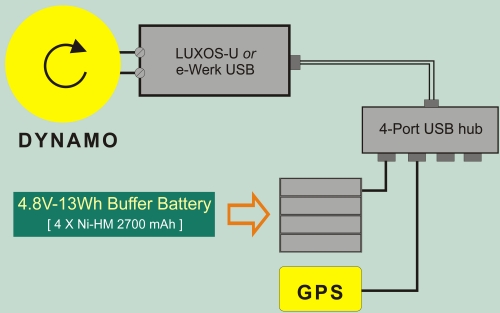It's worth mentioning that a silicon diode bridge, while a simple option, loses approx. 1.4V across the two conducting diodes, resulting in approx. 0.7Watts loss at 0.5A. This might not sound much but is a good proportion of the rated 3Watts. A worthwhile improvement can be gained by using Schottky diodes instead of silicon (approx. 1V drop per pair instead of 1.4V), but the best circuit is an
active rectifier using MOSFETs. The drawback is that for any circuit where the output voltage might, even momentarily, exceed the input - such as when charging a battery or capacitor - the conducting MOSFETs will be a near short circuit to that battery / capacitor. To overcome this more complex triggering arrangements are needed - but these are available on chips
such as the one described here. For a simple circuit directly driving an LED the four MOSFET circuit should do fine.
I haven't tried these circuits myself, as I've always bought commercially available lamps for their optics - and, of course, they come with ready sorted rectifier and standlight circuits.


